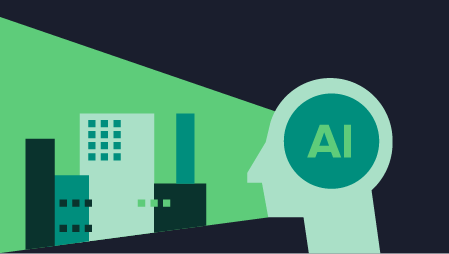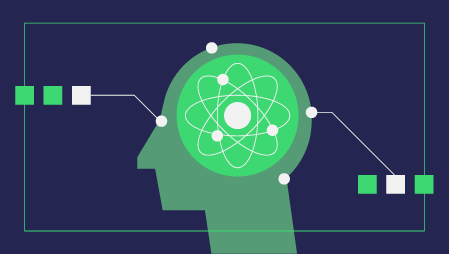Machine learning methods are used in a wide range of areas. In this post, I will discuss a few of the ways that machine learning is used within the education space – specifically K-12. Machine learning has the potential of making a significant impact in this space, so let’s look at some of those areas. Machine learning uses statistical techniques to help computers “learn” without being explicitly programmed. In the education space, machine learning is used in learning analytics and artificial intelligence. The best part of using machine learning and data science in education is that it can have a considerable impact on student achievement and help close achievement gaps.
Personalized learning
Learning analytics is the process of collecting, measuring, and using data about learners to build profiles and analyze student behavior. Machine learning algorithms are used to create these profiles and then design learning paths for each student. This process is known as adaptive learning. Each student can learn and work through the material at their own pace. These recommendations and learning paths are based on previous successes or failures. Teachers then can use this information to change the overall pacing of how they are delivering the material. In the classroom, learning analytics can collect attendance and assessment data and then provide personalized feedback about achievement.
Within the last five years, there has been an increase in the use of AI and chatbots, or “bots” in personalizing the learning experience. Bots such as “Snatchbot” allows both teachers and administrators to customize a bot based on specific classroom needs. They can be used as supplements to the classroom and provide content to suit individual student needs. Using bots can help ensure that all students are engaged in the learning process. Some of the bots allow teachers to make quizzes, surveys, polls, games and even help students with English or mathematics problems. The bots can also teach students various subjects from fitness and nutrition to banking and finance.
Think about the app Duolingo. If you’re not familiar with it – check it out! It is an app to help you learn languages. While not technically just for K-12, students in elementary and secondary schools could use the app as a supplement for their regular language classes. I only wish I had access to this app when I was learning German back in high school! The app uses machine learning to predict the probability of remembering certain words or phrases. Then, if the app detects that you are frequently missing these certain words or phrases, it can recommend that you practice them until you have mastered them.
Predicting At-Risk Students
One of the more significant challenges facing K-12 educators is the identification of at-risk students before it’s too late. Once identified, educators need to intervene as quickly as possible. Some of the questions that educators face include “How can we accurately identify those students who need help, and do so as quickly as possible”? According to the U.S. Department of Education, National Center for Education Statistics, a staggering 750,000 students do not finish high school on time each year. There are a variety of reasons for this, but we do know that even the best states in terms of graduation rates are not even reaching 90% on-time graduation. Raising graduation rates requires continuous improvement and “sustained, consistent effort” (Americas Promise, 2018, para 7.).
Machine learning models can be used to predict if a student is at risk of dropping out or not graduating on time. These models include random forests, adaboost, support vector machines, decision trees, and logistic regression. These types of problems can be formulated as a binary classification problem, which means that the outcome can be one of two things: the student graduated on time, or they did not. The goal of using machine learning to identify at-risk students is to be able to predict the future based on a set of training data. The most often used machine learning approach is to use a classification model to be able to predict at-risk students. In Illinois, the State Board of Education has developed an early warning system for at-risk high school students, which uses some of the machine learning methods mentioned above. Not only does their analytics platform identify at-risk students, but it is also able to make recommendations on specific interventions that a teacher should use to get a student back on track.
Not only can machine learning help predict if a student is at risk for dropping out, but they can also determine what factors contribute the most to a student dropping out. An early warning and detection system built using machine learning can assist schools with identifying and recommending interventions long before the student drops out of school. Since there can be a myriad of factors that contribute to a student dropping out of school, the machine learning algorithms can help narrow down these factors to a manageable number of them – perhaps even indicating that one particular factor, if addressed, could lower the chances of the student dropping out. Demographic data, attendance data, assessment data, performance data, registration data, social-emotional learning (SEL) data, financial circumstances, family situation, motivation, and so on, are all contributors to the student’s experience and whether he or she intends to drop out. By using these factors, the machine learning algorithm could use a method called principal component analysis (PCA) to reduce the number of variables down to the most important ones and assign a risk score to each student. Risk scores are then used to identify students that may be at risk of going off track – those students who might be at risk before they get failing grades, and then interventions can be tailored to those students.
Automation of Administrative Tasks
One other exciting application of machine learning and artificial intelligence is how it can help automate administrative tasks that teachers often dread. Teachers spend a lot of time grading assessments such as homework, quizzes, and tests. Currently, machine learning can be used to automatically the multiple choice and true-false type of responses. Soon, machine learning will be able to evaluate written responses like essays and short answers. Using machine learning in this way can give teachers extra time to devote to other activities, such as spending more time with students or designing their lesson plans.
I do not see machine learning or AI taking the place of teachers. There may be apprehension by some educators in thinking that these technologies will take over the jobs of teachers. This is not so. In fact, I think the technologies will require us to shift our thinking about the role of a teacher, which will be increasingly focused on relationship building and guiding each individual student along their path, and also ensuring that all students are achieving excellence in the various core content areas, such as English Language Arts, Mathematics, Civics, and so on.
I’m excited to see how machine learning and AI will continue to have a significant impact on education!
Americas Promise. (2018). Building a Grad Nation Report. Retrieved from https://gradnation.americaspromise.org/2018-building-grad-nation-report




